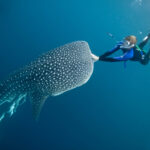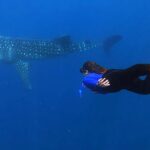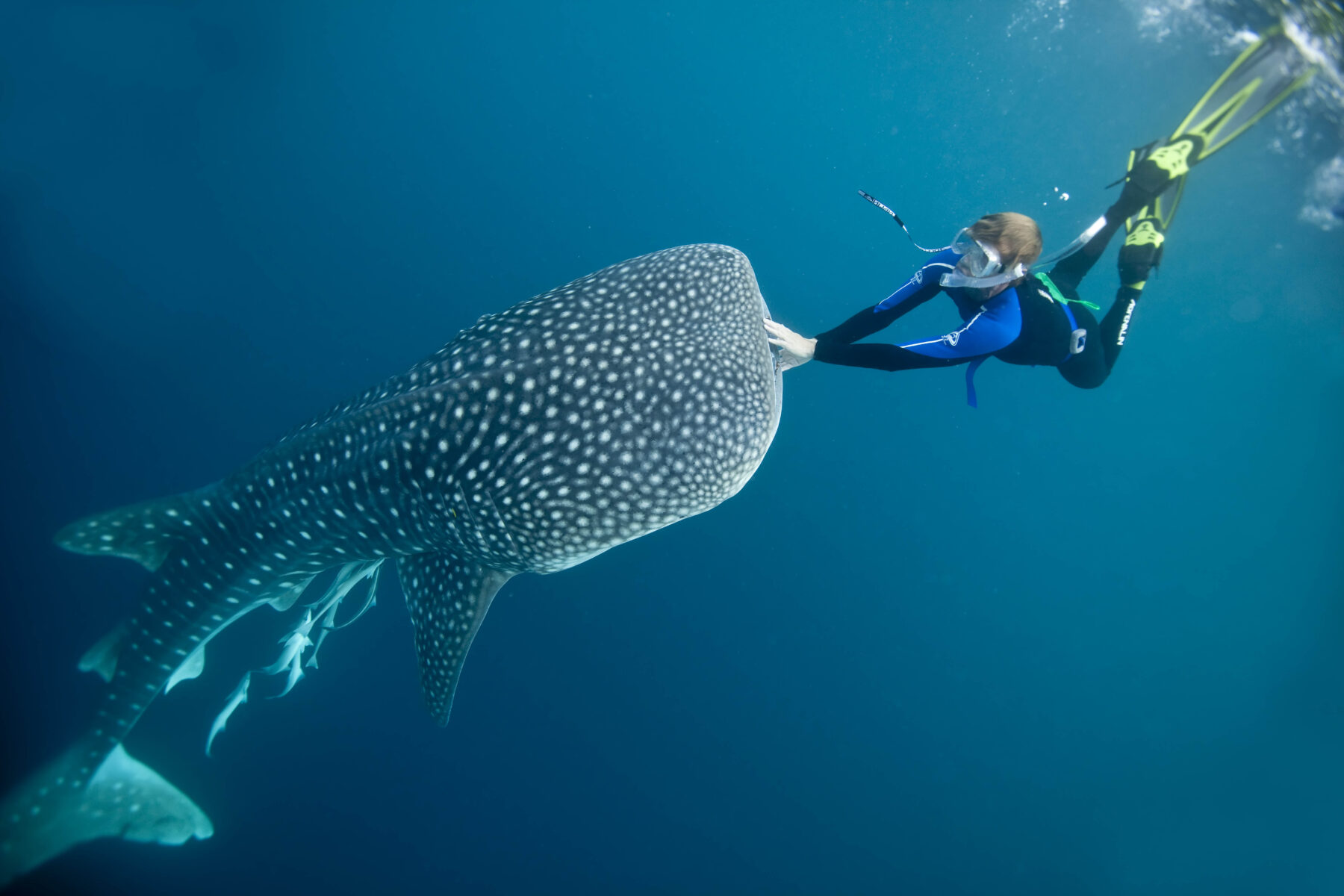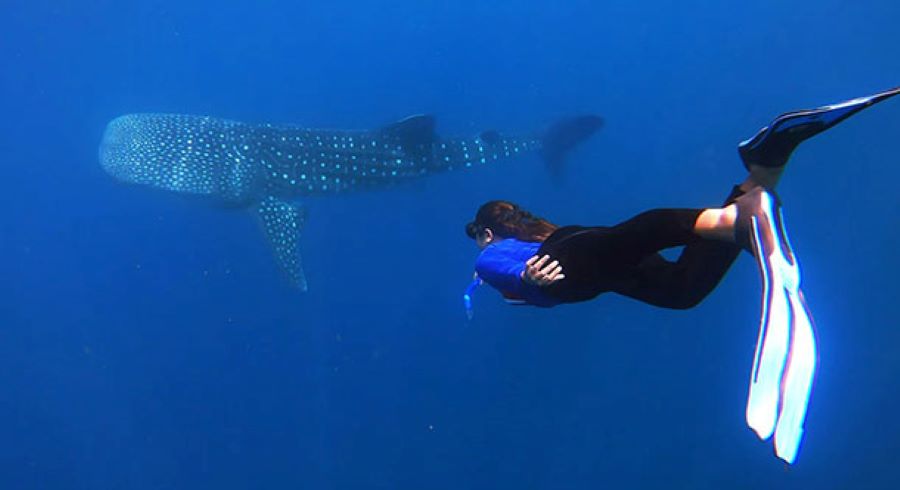When people think of Indonesia’s marine life, their minds often go straight to Bali’s coral reefs or Raja Ampat’s kaleidoscopic biodiversity. But quietly, just east of Lombok, lies an untamed marine sanctuary where adventure, serenity, and conservation meet: Sumbawa. And here, in its wide, turquoise bays, the world’s largest fish — the magnificent whale shark — glides through the waters like a living submarine.
Welcome to the incredible world of whale shark Sumbawa — a destination that’s rising in popularity among ethical wildlife lovers, conscious divers, and off-the-beaten-path explorers.
What’s So Special About Whale Shark Sumbawa?
The whale shark (Rhincodon typus), despite its massive size (some grow up to 12 meters long!), is a gentle giant. Feeding only on plankton and small fish, it poses no threat to humans — making it one of the most majestic animals to swim beside.
But what truly sets the whale shark Sumbawa experience apart isn’t just the animal — it’s the setting.
1. Raw, Untouched Waters
Sumbawa remains one of Indonesia’s least-commercialized islands. Here, you won’t find rows of resorts or overbooked tour boats. Instead, imagine glassy waters, traditional fishing platforms, and the quiet hum of nature. This tranquility allows for intimate, respectful interactions with marine life.
2. Naturally Occurring Sightings
In areas like Saleh Bay (Teluk Saleh), whale sharks are drawn to the small anchovies attracted by local fishing lights — not artificial feeding, which can disrupt natural behavior. This means every encounter feels authentic and unforced.
3. Sustainable Community Tourism
Local communities, especially in fishing villages like Labuan Jambu, are at the heart of Sumbawa’s whale shark ecotourism. Instead of exploiting the animals, they now protect them — and earn income from guiding respectful tours. This model is shifting the tide of conservation across the island.
Where to See Whale Sharks in Sumbawa
While whale sharks can occasionally be spotted off various parts of the Sumbawan coast, the epicenter for sightings is Saleh Bay, located on the island’s northern side. This large, sheltered bay is surrounded by volcanic hills and dotted with floating fishing platforms (bagan) — perfect whale shark hangouts.
- Labuan Jambu: A small coastal village that has become a launch point for most whale shark tours.
- Teluk Santong: Another lesser-known area where locals have reported sightings.
- Moyo Island: While better known for waterfalls and jungle treks, Moyo’s surrounding waters occasionally host whale sharks too.
When Is the Best Time to Visit?
The best season for whale shark Sumbawa experiences is typically April to October, with peak sightings between May and August. These months offer calm seas, good visibility, and frequent appearances of the gentle giants.
Tours usually depart just before sunrise, as that’s when whale sharks come near the surface to feed around the bagan. If you’re not an early riser, the promise of swimming with a 10-meter fish might just change your habits.
What to Expect on a Whale Shark Sumbawa Tour
A typical experience includes:
- Early Start: Depart around 4:30 to 5:00 AM from Labuan Jambu.
- Short Boat Ride: About 20–30 minutes to reach the floating platforms.
- Snorkeling Session: Once the whale sharks are spotted, travelers can gently enter the water to swim beside them.
- Back by Mid-Morning: You’ll be back before brunch, exhilarated and speechless.
Important: Scuba diving is not required. Most whale shark encounters here are snorkeling-based, making it accessible even for beginner swimmers.
Ethical Guidelines for Whale Shark Encounters
With increasing interest comes increasing responsibility. Whale sharks are listed as endangered, and tourism — if done wrong — can stress or harm them. Follow these basic guidelines to ensure your trip helps, not hurts:
- Do not touch or ride the whale shark. Ever.
- Maintain a respectful distance of at least 3 meters from the head and 4 meters from the tail.
- No flash photography or loud noises that might disturb them.
- Avoid applying sunscreen right before entering the water. Use reef-safe options, applied well in advance.
- Support local, certified operators who follow ethical practices.
Remember: A good photo is great, but a safe encounter is priceless.
How Tourism Helps Whale Shark Conservation in Sumbawa
Unlike mass tourism spots that have damaged marine ecosystems, Sumbawa’s whale shark tours are emerging in tandem with community-based conservation efforts. Here’s how your visit supports sustainability:
- Alternative Income for Fishermen: Many local fishermen now serve as guides, reducing pressure on overfishing and promoting marine protection.
- Data Collection: Tour operators often work with researchers to photo-ID whale sharks, helping track migration and population health.
- Education: Increased awareness among locals and tourists leads to better protection of habitats and regulation of irresponsible operators.
In short, whale shark Sumbawa isn’t just a destination — it’s a movement.
What Else to Do in Sumbawa?
Once you’ve had your once-in-a-lifetime swim with a whale shark, don’t pack your bags just yet. Sumbawa is full of hidden gems:
- 🏝 Moyo Island: Crystal-clear rivers, wild waterfalls like Mata Jitu (visited by Princess Diana!), and untouched beaches.
- 🌋 Mount Tambora: Hike this colossal volcano, site of the world’s largest recorded eruption (1815), for dramatic views and serious bragging rights.
- 🏄 Lakey Peak: Surfer? This legendary break on Sumbawa’s southern coast is a wave rider’s dream.
- 🧕 Cultural Villages: Visit traditional homes, taste authentic Sumbawanese cuisine, and see local ikat weaving in action.
Insider Tips for the Best Experience
- Stay Overnight in Labuan Jambu: It’s a small, simple village — not luxurious, but friendly and welcoming.
- Bring Underwater Camera Gear: Waterproof phone pouches or action cameras help you capture the magic.
- Book With a Trusted Local Operator: Choose those that prioritize ethical wildlife encounters and support local livelihoods.
- Brush Up on Bahasa Indonesia: Even a few words will earn you smiles and better connections.
Why Whale Shark Sumbawa Is a Rare Kind of Adventure
In a world where wildlife tourism is too often about exploitation, Sumbawa offers something different — an experience that feels pure, grounded, and meaningful.
Swimming with a whale shark in Sumbawa isn’t about chasing likes on social media. It’s about feeling small in the best way possible. It’s about seeing an endangered species thrive in waters where community and conservation go hand in hand.
And above all, it’s about choosing travel that doesn’t just inspire — but sustains.
So if you’re looking to dive deeper (figuratively and literally), skip the crowds, and do something that matters — Sumbawa is calling. And the whale sharks are waiting.










